

Table of contents
- Possible damage images
- Brown leaf tips
- yellow or brown edges
- Yellow-green leaves
- Yellow falling leaves
- brown leaves
- Pale to yellowish leaves
- frequently asked Questions
- Interesting facts about leaf discoloration on indoor plants
- Editor's conclusion
Indoor plants make a significant contribution to improving the indoor climate, but their lifespan is often shorter than it should be. The causes are diverse, such as incorrect care or illnesses or Pests that were noticed too late and then often the plant can no longer be saved.
The first signs of problems are usually yellow or brown leaves, although a distinction must be made here as to whether they are are some dying leaves, which is completely normal, or if significantly more leaves are showing discoloration. As soon as the discoloration occurs in an abnormal amount, countermeasures should be taken since there is still a good chance of saving the plant.
Possible damage images
When it comes to damage, it is important to make precise distinctions, because it is often not the entire leaf that is affected, but only the tips, or yellow or yellow spots appear. brown spots.
Brown leaf tips
Brown leaf tips can have two possible causes, the most common being that the air in the room is too dry. Therefore, this problem occurs more frequently in the winter months when there is insufficient ventilation and excessive heating or the plants are directly above the radiator. Here, simply by changing location or increasing the humidity by placing a bowl of water on the heater can solve the problem. In addition to the dry air, an excess of mineral salts can also be the cause, in which case the fertilizer application with mineral salts should be reduced and the plant may have to be repotted in soil that is poorer in mineral salts so that the household can settle down again balances.
yellow or brown edges
Air that is too dry or too high a lime content of the soil can be to blame. Much more frequently, however, this damage is due to over-fertilization or attributed to excessive watering. In this case, it is essential that the plant is repotted and watered less in the future.
Tip:
If you often have problems with indoor plants due to overwatering, you should cover the bottom of the pot with clay granules. This allows the excess water to drain away and, at the same time, water to be stored, which is then slowly released to the plants.
Yellow-green leaves
It is also important to act quickly here, as this damage usually affects the entire plant within a very short time and not just the older leaves. This problem often occurs in regions with very calcareous water, as there is an excess of lime. The substrate of the affected plant must also be renewed, as the lime has also settled in the soil. In the future, care should be taken to use low-lime fertilizer and water. Since the water often becomes a problem and it is not possible to water with low-lime water, the soil of the plant should be renewed at least once a year.
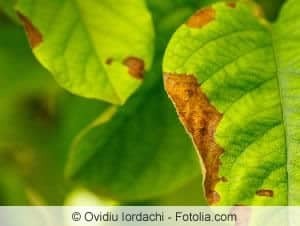

This problem also occurs more frequently in winter and often affects plants that prefer very bright locations. These plants are often exotic species from dry and warm regions, which have a hard time in this country in winter because they There is no light unless they stand near the windows and they often get too cold if a room is not heated regularly. In addition, many forget that evergreen houseplants also have a dormant phase in winter and that they should not be supplied with excessive water during this time. Therefore, watering should be reduced immediately if too many leaves fall off.
brown leaves
In comparison to the damage caused by the brown tips, the leaves here turn brown and die within a few days. There can be many causes for this and it can be frost damage, for example. This type of damage can occur quickly, especially with heat-loving exotic plants - often ten minutes of airing is enough to cause frost damage. Not much can be done here, only the affected parts of the plant can be removed, otherwise you have to wait and see how big the damage is. Rapidly browning leaves can also result from improper watering and root rot from excessive moisture. In this case, the plant should be repotted quickly into a new substrate, but the chances of saving the plant in the event of root rot are extremely slim.
Tip:
Root rot is a common problem with houseplants due to the preference for one-off watering rather than small, frequent waterings. However, houseplants should never stand in water permanently, but the cachepot should only be an overflow protection.
Pale to yellowish leaves
If the leaves quickly lose their color, especially the young leaves, this is often an indication of a deficiency symptom. Poor growth is often associated with this type of damage, since the nutrients for good development are lacking. A fertilizer for indoor plants should be used here, which should be used in liquid form if possible. The plants can absorb this much faster, which is particularly important if deficiency symptoms occur. So that there is no shortage of nutrients, long-term fertilizers can be used in solid form, which then often only have to be added to the substrate once a month.
frequently asked Questions
Basically, the leaves should only be removed when they simply come off the plant. If they are cut off when they are still supplied with water, this costs the plant unnecessarily Power to close the open wounds, although they need this energy much more for regeneration would.
In fact, watering indoor plants is always a problem, because either too much or too little is watered. In addition to drainage with clay granules, it is therefore advisable to put a hydrometer in the substrate. This shows how moist the soil is and you can see immediately whether it needs to be watered again. In addition, plants should not be supplied with too much water, especially before the holiday, as they survive a dry period much better than a phase with too much water.
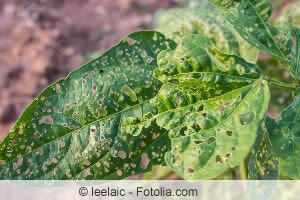
Interesting facts about leaf discoloration on indoor plants
- Brown leaf edges and brown leaves can be a sign of depleted soil. The plant needs a new plant substrate. She needs to be repotted.
- However, the soil is often simply too moist or too dry. You should look up the care instructions for the plants and follow them.
- Rolled up and limp leaves indicate a lack of water. If you don't water, the leaves will also turn brown.
- If too little is poured, the tips of the leaves will turn brown. In contrast, immersion baths help.
- Brown leaf tips can also indicate a wrong location, usually too close to the heater. You can carefully cut off the ends.
Tip:
However, you have to leave a narrow hem so that the interface does not dry out again immediately.
- In addition, the humidity is usually too low. Most tropical houseplants require a humidity level of 80 to 90 percent.
- Yellow leaves often indicate a nitrogen deficiency. This can be remedied with nitrogen fertilizer doses.
- A wrong location can also lead to yellow leaves. It also indicates incorrect temperatures, either too high or too low.
- Yellow leaves on palm trees often indicate incorrect watering. Usually they are watered too much.
- Palm trees are actually very robust. What they cannot tolerate is standing water. Wait until the top layer of soil has dried before watering again.
- Planters should be checked for standing water. This definitely needs to be drained.
- In palm trees, yellow leaves can also indicate a nutrient deficiency. This usually happens with very small planters.
- In addition, many plants react to low humidity with yellow leaves. Spraying the plants regularly with water helps.
- In some plants, yellow leaves indicate an iron deficiency (chlorosis). It is caused by iron and magnesium deficiency.
- Yellow leaves are usually caused by an increased pH value in the soil. This prevents the absorption of iron and magnesium.
Tip:
This can be changed by repotting and adding iron and magnesium fertilizer.
- Light-colored leaves with green veins indicate an iron deficiency. If this is the case with your plants, you can add iron chelate to the irrigation water.
Editor's conclusion
There can often be several causes for yellow or brown leaves on indoor plants. It's not always easy to find out the real reason. The best thing to do is to look up what the plants require in terms of location, plant substrate and care. Then you can already see whether you can offer all that or whether something needs to be changed.
The drying of the leaves is often a completely natural process. an aging process. Dried parts are cut off from the plant. You have to be careful not to damage the healthy tissue of the leaves.
 garden editorial
garden editorial I write about everything that interests me in my garden.
Learn more about grooming

send plants | 7 tips for sending flowers
Sending plants requires good preparation. Not only the type of packaging is of great importance, so that the goods arrive safely at their destination. The season is also important. It depends on how well the plants survive the transport.

30 office plants for a better indoor climate
A bit of green in the office not only looks pretty, but can also significantly improve the indoor climate. For example, indoor plants increase humidity, can clean the air and, if they are large enough, even dampen noise.
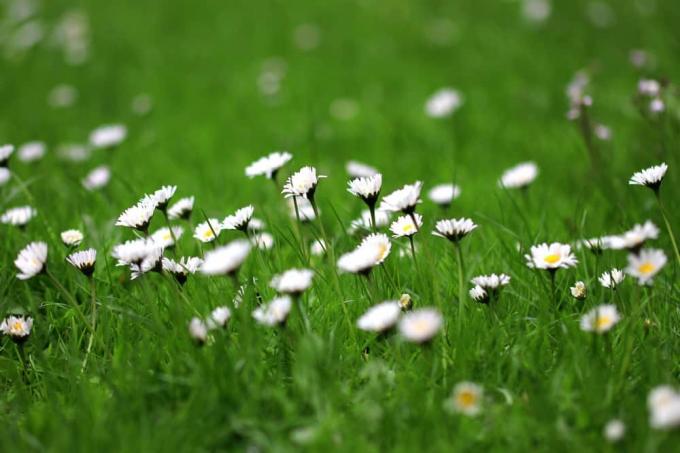
21 edible flowers | What flowers can you eat?
Edible flowers can be used for many dishes in the kitchen, not just as decoration. The flavors range from sugary-sweet to peppery-spicy and give food and drinks a very special touch.
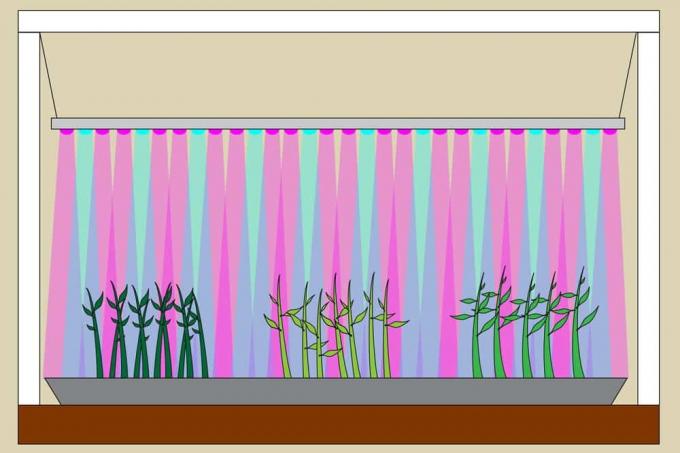
Everything about LED plant lights: Build plant lights yourself
Plants need light. In the absence of it, they suffer or perish. Sometimes, conventional daylight just isn't enough to meet a plant's light needs. Then LED plant lighting can help. How to build such a plant light yourself is here.

Shade plants: 17 green and flowering plants for the shade
Shady garden areas are a challenge for every hobby gardener, although shade does not mean that it is completely dark. Partial shadow and light shadow are also a type of shadow. The range of suitable plants is growing steadily and offers a variety of design options.
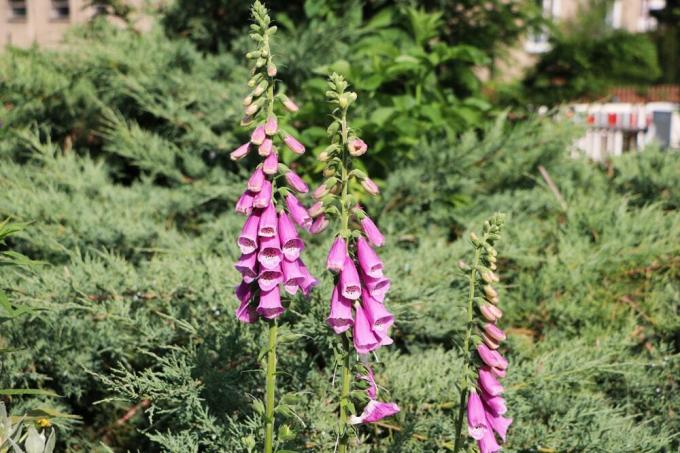
Forest flowers: 55 flowering species in the forest sorted by color
When the local forests dress in picturesque shades of color throughout the year, the numerous forest flowers in Germany present themselves and inspire with their blaze of colour. From purple to red to white and yellow, the German forests have a lot to offer.
